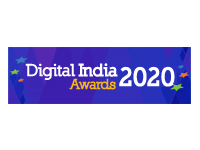Problems and Prospects in Translation*
Ashok K. Chawla
Indian National Scientific Documentation Centre, New Delhi - 110067
The term jouhou in Japanese was more akin to intelligence rather than information, sometime ago. Today, there are terms like jouhou sangyou, the information industry, which is engaged in the business of production, communication, sales and information services and is also concerned with computers, directly or indirectly. In broader sense, it also includes the information processing or data processing industry, publishing, printing, newspaper, broadcasting and advertisement, etc. The information industry today is supported by the fast development in the field of multimedia.
Other important terms related to information include jouhou kougai, i.e. the information nuisance. As the society becomes more informed, it faces various problems of information nuisance also, like infringement of privacy, etc., which had created the need for information security. However, so far the flow of information in the field of S&T has largely served the creative ends, though it may not be an exaggeration to mention here that the exchange of information between India and Japan, particularly the availability of Japanese information to the Indian user needs to be augmented.
1. Demand for Japanese Information in India
1.1 Industrial Applications
There is no doubt that the demand of Japanese information in India has been growing on continuous basis for more than last two decades. The number of technical collaborations, transfer of technologies, equity participation and other collaboration in the field of S&T has grown many fold, with the popularity and acceptance of Japanese electrical appliances, automobiles and other goods in India, during the last two decades.
1.2 Student Visiting & Study of Japanese Language
The cooperation on academic side has also grown. the number of students visiting Japan from India to pursue higher studies in various disciplines including science & technology has also increased less than the number of students visiting Japan from much smaller countries like Thailand, etc. The total number of students learning Japanese, say for example in Delhi has gone up to few hundreds currently, as compared to a few tens only just a decade ago. The demands for Japanese language knowing persons for communication and information collection or translation purpose has increased so much that almost every person who has learnt and passed the Japanese language successfully, today, can get a good job easily.
1.3 Major Information Seekers
The major demand for Japanese information comes from the research, both private as well as Government sector. It is interesting to note that the private sector industries in particular, depend for their Japanese information requirement on the information dealers like INSDOC in the beginning, whereas they prefer to set up their in-house facilities for the same functions, once the Japanese counterparts step in. The demand is particularly high for the patents. The major disciplines in which informaion is sought include polymers, solar cells, ceramics, steel, environment friendly systems, automobiles, etc.
2. Sources of Japanese Information in India
2.1 Official Efforts from Japanese Side
The major sources of Japanese information from among the Japanese Government efforts can be listed as follows:
2.1.1 Japanese Embassy/JCIC
JCIC is the acronym for Japanese Culture and Information Centre and though it has made great contribution in the field of Japanese culture and Japanese language learning, it does not cover the field of S & T. The Japanese Embassy has a very strong division which deals with the matters related to the S & T and also provides the necessary information and the guidance in response to the queries. However, there is no mechanism through which the S&T information can be freely available to the researchers, scientists and technologists, etc., reasonable cost within the country.
2.1.2 JETRO
JETRO is the external trade and research organization of Japanese Government and is the major provider of information on Japanese trade and industry. It provides the support services to the trade, business and official delegations from Japan and is equipped with a library with up-to-date collection as well. However, the information available at JETRO relates mainly to the trade and industry, and the information can be obtained by visiting the library in person only.
2.1.3 OECF/JICA
These two bodies handle the official aids and financial/expert support programmes. However, their information collection is meant for their in-house consumption.
2.1.4 Japan Foundation
Japan Foundation has been very active, especially since the establishment of its office in New Delhi, However, the S&T information does not fall within the scope of its activities.
2.1.5 Others
The major corporate houses of Japan, particularly the trading houses like Mitsubishi, Marubeni, Mitsui, etc. have their own network of information collection and dissemination. However, their main efforts are concentrated to serve their respective business and the information and the information generated from the industrial collaboration is also meant for in-house consumption.
2.2 Official Efforts from Indian Side
The major efforts by the Indian side for collecting the Japanese S&T information and its dissemination for the use of Indian researchers and scientists can be listed as follows:
2.2.1 Indian Embassy, Tokyo
Indian Embassy is well equipped with the expertise in the form of Counsellor for Science & Technology, for collection, analysis and dissemination of the Japanese S&T information to the Indian public. In fact, for some time there was a continuous flow of information on periodic basis from the Indian Embassy to INSDOC which further made efforts to analyze, organize and disseminate the same information to the Indian users on trial basis.
2.2.2 Indian National Scientific Documentation Centre, New Delhi
INSDOC has been the major source of Japanese information in India. It is probably the only organization in the country which has an organized system of Japanese information collection, translation and dissemination. It has a Document Supply Division which procures the S&T information from its own library (National Science Library) and various other sources including the domestic as well as foreign sources. The reprographic services of INSDOC include photocopying, microfilming, slide making, etc. and its Translation Services Division is the strongest provider of Japanese translations in the country including among the private sector translation companies, in term of quality and delivery.
2.2.3 JITNET
JITNet was established by the Indian Embassy in Tokyo with the end objective of promoting Indo-Japanese Technology Cooperation and it has been growing in size since then, with the cooperative inputs from University of Tokyo (Tokyo), CII-Japan desk (New Delhi), Technology Bureau for Small Enterprises (New Delhi), and INSDOC, besides the Indian Embassy in Tokyo. Its homepage of internet’s WWW comprises:
- JITNet Page, which provides introduction, conceptual framework, mailing list etc.;
- Japan Page, which has a general information section and the science & technology pointers that cover technology transfer database with requests or offers of technologies from Japanese companies, corporate & business information like technical reports, economic surveys, standardization and information on MITI (Ministry of International Trade and Industry), STA (Science & Technology Agency), etc.; and
- India Page, which also has a general section and the S&T pointers that include "India Economic and Business Overview" covering information on institution structure, economy, statistical details, taxation system and foreign investment, etc., periodic issues of India Investment Window, offers and requests for technologies from companies in India, information of the different laboratories of CSIR covering their major R&D of Scientific & Industrial Research) covering their major R&D achievements, technologies transferred/available for transfer, etc.
2.2.4 Others
Some research institutes like Shriram Research Institute, research department of Dabur or Thapar Institute, etc. in private sector, universities, industries, different business chambers especially CII, etc., Government bodies and individuals have direct channels with their counterparts or other sources and they may have direct or indirect access to the important and relevant information. Besides, the patent information of NIC (National Informatics Centre) and the Patent Office at Pune and Nagpur collect the patents from all over the world including Japan. The other institutions which collect the field-wise information are the UN-APCTT (UN-Asia Pacific Centre for Technology Transfer) at New Delhi, BARC (Bhabha Atomic Research Centre) at Mumbai, ICMR (Indian Council of Medical Research) and different departments of Government of India like Department of Space and Department of Biotechnology, etc.
3. Major Problems in Obtaining the Japanese Information
3.1 General
Though a number of sources have been mentioned above which are engaged in collection of Japanese information, the end user finds it very difficult to get the Japanese information for various reasons. First of all, the end users are not well aware of even the above mentioned sources. This calls for a more rigorous awareness programme. Second, the capability of these sources to collect and disseminate the information has either not been tapped fully or these sources are not well equipped. Cost is another major prohibitive factor, with regard to the Japanese information.
3.2 Language Problem
When it comes to the application and use of information, say for example in industry or research, the language poses most difficult problem. Though, most of the recent papers and other publications have synopsis in English, many documents originating from Japan do not have even the bibliographic information in English. The old books or documents obviously are in Japanese alone. Translation of the relevant portion or full text of these documents is a major task which involves expertise of subject and language in addition to the cost.
4. Translation Needs and the capacity
4.1 Needs and the Capacity
According to a national survey of translation needs of India, conducted by ISTA (Indian Scientific Translators Association) in 1982, the country’s translation requirement then was estimated at 14,620 pages per year which was to grow by about 75% in next five years. It may be difficult to give the exact current demand of the Japanese translation, but a rough estimate of the total number of pages translated during last year by the major institutes like INSDOC, DESIDOC, BARC, Maruti Udyog Ltd., and other companies and private agencies including the end users, does not exceed 15,000 pages. It is felt that the demand is much higher but either the users could not reach the translators/translation agencies or they could not afford the cost involved or their needs were not very pressing. And it may be mentioned here that some of the institutes like INSDOC has not utilized even 50% of its full capacity to carry out the Japanese translation. Total number of translators who can deliver workable translation of S & T documents still may not exceed 25.
4.2 Problems of Translation
Japanese language has its typical characteristics and it is already established that it takes more than five years of language learning alone to master the language and it is from here that the process of developing translation skills commences. Therefore, there are very few individuals who dare venture into this profession, due to sufficient time requirement and input efforts.
Second, the facilities for providing training in translation of S&T texts are very few. Only recently, one major university has introduced a special course on scientific translation in its regular five year curriculum of Japanese language teaching. The only other training facility is provided by the INSDOC, where the staff translators devote time on human resource development and train the panel translators on one-to-one basis.
Third, the dictionaries and tools required for translation are too expensive and not easily available in India. Except INSDOC, which has a fairly good collection of one or two Japanese S & T dictionaries, no other institution or university is well equipped with such dictionaries and the translators have to collect the dictionaries from their own resources.
Next, the professional efforts in the field of Japanese translation are scattered. As the end users, particularly the private sector, find it more convenient to employ the in- house translation staff for prompt delivery and easy access. The only agency that brings together all the translators is ISTA, which can probably activate the Japanese S & T translation activity, may be through a Japanese cell, which needs to be created under ISTA or through its annual journal JISTA. For the time being, it is INSDOC which plays the major role of interaction among its panel translators and also motivates the young translators to join its panel.
5. FUTURE PROSPECTS
5.1 Hopeful Scenario
It is hoped that the on-going process of liberalization of economy in India shall gradually bring in more need of Japanese information as well as translation. This is expected to be further boosted by more frequent visits of academicians and researchers between the two nations.
5.2 Demand Growth
The actual demand of translation for the purpose of communication can b[at]-- expected to double in next 2-3 years. Further, there is a great potential and possibility of supplying the translation as the final product. The academic institutes are gearing up to turn out more professionals thus adding to the total capacity. Another favourable factor is the cost; the final cost per page of translation is still as low as 1/Sth of the charges prevalent in Japan. This is already attracting the attention of professional translation agencies or the publishers abroad to tap the Indian translation resources.
5.3 Output Format and Form
With the free availability of hardware and software, it has become possible to provide the translation Output in any form. This may be a DTP worked out hardcopy or the document on floppy. It is also possible to provide the Japanese-English translation anywhere across the globe through e-mail or fax or in voice form on audio cassettes. The English-Japanese translation can be provided with the output either in hand-written or in word processed form or even in voice form. However, it may still not be possible to send across the final Japanese output through e-mail due to the problem of Japanese script.
5.4 Machine Translation
In fact, a small group of scientists started working on machine translation at INSDOC as early as in mid- seventies and since then a number of MT projects have been taken up by various organizations or groups like Indian Institute of Technology at Kanpur, Jawaharlal Nehru University, University of Roorkee and CDAC, Pune. However, there is no working MT system in India at present in general, and no work has been carried out so far on Japanese-English or Japanese-Hindi or vice-versa. Nevertheless, the institutions like INSDOC would like to procure the existing Japanese MT system from abroad, depending on the economic viability, to translate at least the bibliography and even abstracts to disseminate the Japanese information for the consumption of Indian public, which may then generate more demand for the Japanese translation.
6. CONCLUSIONS
6.1 Demand, Capacity and the Potential
It is expected that the total capacity to carry out Japanese-English translation will increase rapidly in India and the demand for the translation work will also increase in natural course. However, there is a great potential to translate the Japanese text books or guidebooks or brochures and reports, etc. into English, which has not been tapped on large scale so far. The information thus can be made available on global basis from India. INSDOC has the experience of translating the cover-to- cover Japanese reports for NTIS of USA and also the text books on Japanese management for domestic requirement. The possibilities of English abstracts of Japanese papers can also be explored.
6.2 Promotion of Technology Transfer
Another area can be the package deal in which the technology offers or requests as well as the publication of research outputs can be covered as a package. In other words, the necessary and relevant information flash can be provided to the potential users who then will seek further information which can be made available after translation, if necessary, and finally providing all the. liaison services up to the writing, signing and implementation of the agreement in two languages, viz. Japanese and English or / and Hindi.
6.3 Suggestion
In order to do so it is proposed to set up a goal oriented Technology Transfer Promotion Cell / Centre, under one of the existing institutions or as independent body, to promote the Japanese technology based business and research in India. This set up shall have linkages with various Indian agencies, departments and private sector or bodies and shall work with the charter of collection, sorting, analysis, organizing, translation and providing of Japanese information as well as to liaison among the users for the implementation of projects or jobs. The proposed body shall prepare and issue a technology flash, through different modes and then respond to any query and follow it up till the project implementation stage, or work even on turn-key basis.
* The paper was presented at Indo-Japan Workshop on Information Technology at New Delhi on 20 August, 1996





















